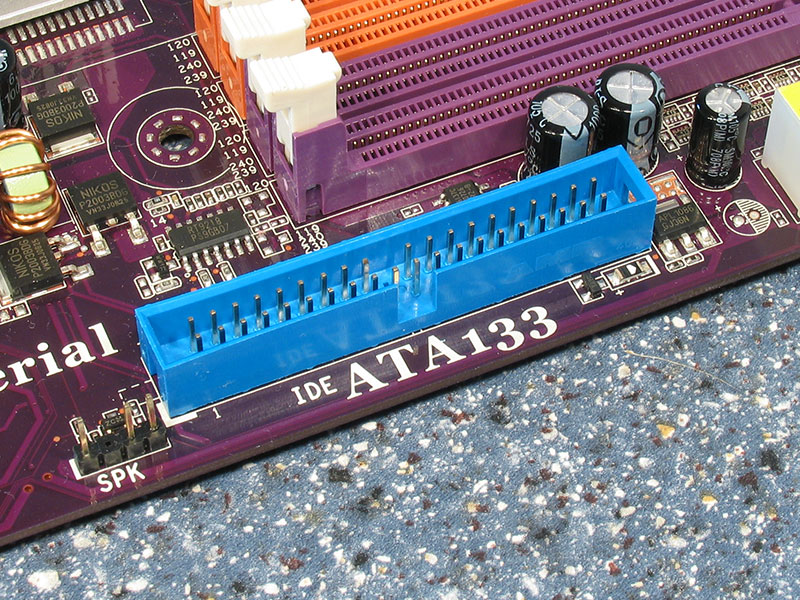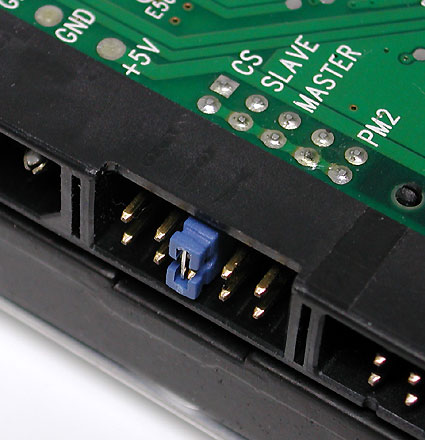Export thread
Hard drive installation
#1

Bonhomme Richard
Bonhomme Richard
Here’s where you can start just getting into personal preference. Most people like the “more is better” school of thought. Of course you’re going to be big on how many gigabytes it can store, but there are at least two other things I would highly recommend looking into: RPM’S and interface. For the former, think of the hard drive as a cd broken into sections. The storage area on hard drives is broken into sectors with a size of 512 bytes (though, that will be changing soon). That picture you’ve stored from your favorite forum of people with genital pastry is going to take up multiple sectors. Chances are those sectors aren’t going to be side by side when you write the file. This is because you can delete a file that’s 4kb, leaving those sectors free and when the next file is written it will grab those sectors first and put the rest of the file in other sectors if it’s larger than what’s available. This is how your computer gets “fragmented”. Defragmenting just puts those in order so the file is all together and the read head doesn’t have to go all over the disk. So, getting back to the RPM, a faster RPM means the disk will spin faster and those sectors can be found quicker.
As for the interface, we’ve come a long way in just the past few years. You can still get IDE drives, but remember those are older (which you might have to do if you’re upgrading piece at a time). You’ll see IDE 100 or 133 (also known as PATA); that reference their transfer speeds in Mbs/sec (notice the little b, that’s bits not bytes. to roughly determine the amount of bytes divide the bit number by 8). The newer drives are SATA with transfer rates of 1.5 or 3.0 Gb/sec . I won’t get into SCSI, since if you’re setting that up you probably don’t need this guide. To pick the proper interface, Google the model of your motherboard (if you don’t know the model of your motherboard you can use a program like Belarc Advisor and scan your computer using the serial number from the Main Circuit Board section. If it’s a Dell the serial number will come up as your service tag and you can go to Dell’s site to get a full rundown of your system) and look for the specs for that motherboard. I generally just search for the model at Newegg if it’s not too old. You should be able to find what interfaces your motherboard will support. But to narrow it down, you can visually tell the difference between the two by the following images:
IDE

SATA

As far as installing it’s fairly simple. Most drives have jumper settings to determine if it’s single, master or slave. Each IDE/SATA channel (path the ports take over the motherboard) can support up to two devices. If there is more than one device, you have to designate which is the master and which is the slave. If the device is the only one on the channel, then just set the jumper to single or master. As far as the user is concerned about master and slave is which one has the higher drive letter. It’s generally a good idea to put the drive your operating system resides on the primary channel as the master. The drive should have letters above or elsewhere on the drive telling you how you should set the jumpers for each configuration. An example is below:

As for the interface, we’ve come a long way in just the past few years. You can still get IDE drives, but remember those are older (which you might have to do if you’re upgrading piece at a time). You’ll see IDE 100 or 133 (also known as PATA); that reference their transfer speeds in Mbs/sec (notice the little b, that’s bits not bytes. to roughly determine the amount of bytes divide the bit number by 8). The newer drives are SATA with transfer rates of 1.5 or 3.0 Gb/sec . I won’t get into SCSI, since if you’re setting that up you probably don’t need this guide. To pick the proper interface, Google the model of your motherboard (if you don’t know the model of your motherboard you can use a program like Belarc Advisor and scan your computer using the serial number from the Main Circuit Board section. If it’s a Dell the serial number will come up as your service tag and you can go to Dell’s site to get a full rundown of your system) and look for the specs for that motherboard. I generally just search for the model at Newegg if it’s not too old. You should be able to find what interfaces your motherboard will support. But to narrow it down, you can visually tell the difference between the two by the following images:
IDE

SATA

As far as installing it’s fairly simple. Most drives have jumper settings to determine if it’s single, master or slave. Each IDE/SATA channel (path the ports take over the motherboard) can support up to two devices. If there is more than one device, you have to designate which is the master and which is the slave. If the device is the only one on the channel, then just set the jumper to single or master. As far as the user is concerned about master and slave is which one has the higher drive letter. It’s generally a good idea to put the drive your operating system resides on the primary channel as the master. The drive should have letters above or elsewhere on the drive telling you how you should set the jumpers for each configuration. An example is below:

#2

Shakey
Shakey
SATA drives don't have jumpers for master and slave. There may be a jumper on there for switching between 1.5 and 3g/sec, but if your building a new one it should already be set to 3g/sec by default.
#4

Tinwhistler
Tinwhistler
most ide drives come with the drive set on 'cable select' nowadays anyway..you usually don't have to change it or worry about it.
